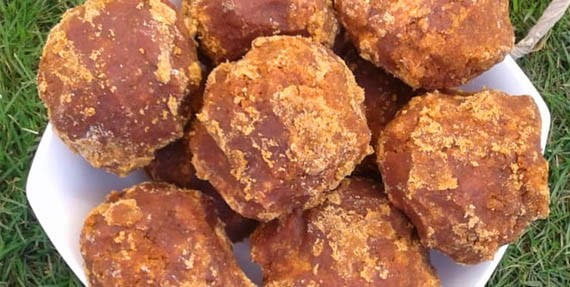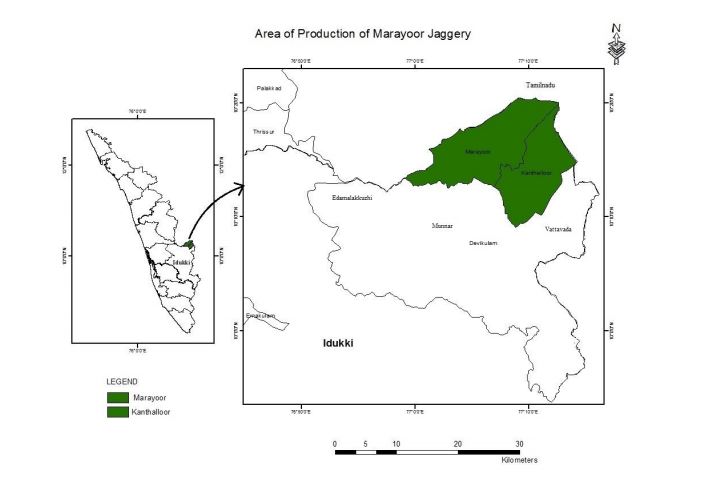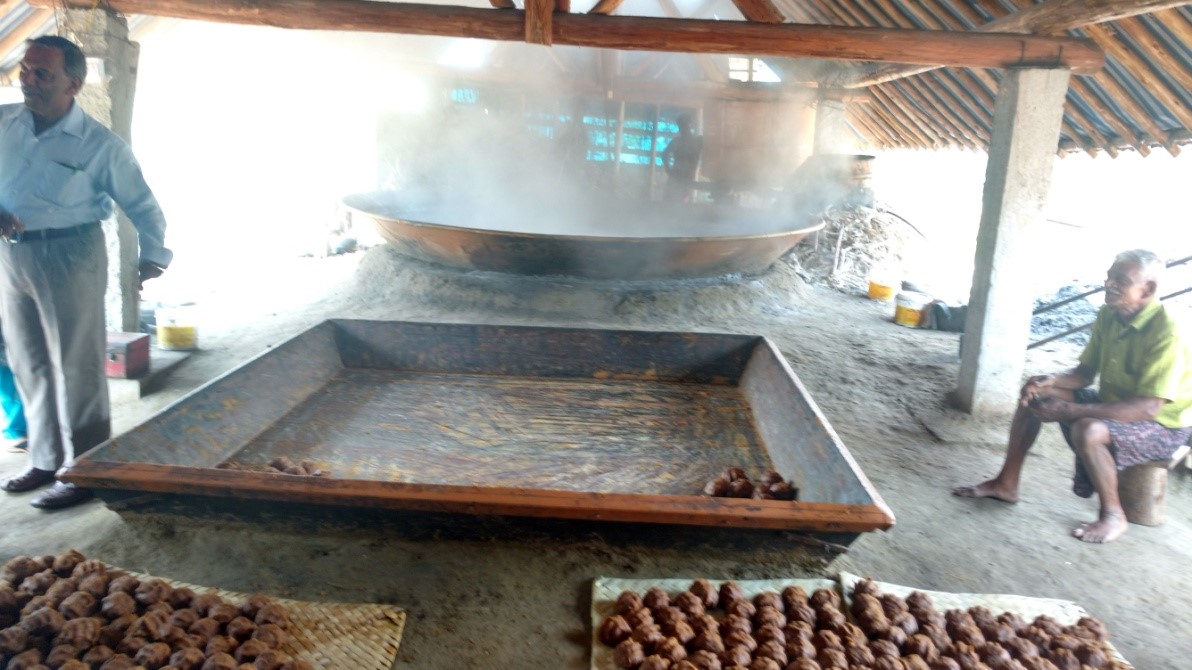


Marayoor Jaggery
Sugarcane is one of the leading cash crops in India from which sugar is produced. In Kerala, the sugarcane is mainly cultivated on the riverbanks of upper Kuttanad areas in Pathanamthitta, Kottayam districts, Chittur region of Palakkad district, and Marayur and Kanthaloor Grama Panchayaths of Idukki District. The entrepreneur farmers produce Unda sarkara (Jaggery in Solid form) and Pathiyan Sarkara (Jaggery in Semi-Solid Form) which has very high demand in the preparation of different types of offerings from the temples of Kerala and for homely food items.
Marayur is famous for sandalwood and is well known by “Marayur Sarkara” and famous for its Geographical Indication (GI) tag. Cultivated in the terraced sugarcane fields of the Marayur and Kanthaloor region, Marayoor jaggery is one of the sweetest jaggery produced using traditional technologies. The area of production of this jaggery fall in the rain shadow region and the quality of Marayoor jaggery is attributed to the low temperature prevailing in the area, soil characteristics, quality of water used for irrigation and jaggery production, the traditional methods of production, and sugarcane varieties used in cultivation.

Marayoor jaggery is produced in the homesteads following traditional practices. In farmsteads, the sugar cane juice is boiled in a special type of huge vessel and then made to condense to make jaggery balls traditionally. Sugarcane trash, after extracting the juice is used to burn the kilns, and the waste is recycled in the farm itself.
The sugarcane juice from the crushing unit is stored in containers of steel or plastic and is pumped into a juice boiling pan. The boiling pan is mostly made of galvanized mild steel.

The pan containing juice is heated till it is crystallized to form a powdery mixture. This crystallized powder mixture is transferred to a wooden moulding tank through a pulley –rope tilting aid to transfer the crystallized and almost solidified mixture. This hot crystallized mixture is hand moulded into balls by bare hands so that hand finger impression is imprinted on the jaggery ball surface.
Usually, Marayoor jaggery is prepared in ball form (unda sarkara) but, minor quantities are also produced in powder and liquid forms. No natural or synthetic colouring agents and artificial sweetening agents are added in this jaggery. Balls are prepared by hand and the finger marks will be seen on the balls. The colour is brown to dark brown. The jaggery balls have medium hardness. Marayoor jaggery is available in a well-dried form with a firm consistency and non-sticky nature. It has characteristic taste and flavour. Non-salty sweetness is the unique characteristic feature of this jaggery. It is having less dirt and water-insoluble matter. Marayoor jaggery has unique brown or dark brown colour. Marayoor jaggery balls have a rough surface with medium hardness.
Generally, Marayoor jaggery has a total sugar percentage of 77.87 to 96.52%, sucrose content of 63.0-80.0%, and a reducing sugar of 7.39-10.35%. The water-insoluble impurities are as low as 0.08-0.16% and acid insoluble ash is 0.021 to 0.14%, which is low compared to samples from other regions. SO2 content is within the permitted limits (32.11- 36.79%). The higher iron (11-26.0%), potassium, calcium content, and lower sodium content are other features of this jaggery, increasing its nutritional benefits.
(Content provided by Kerala Agricultural University)